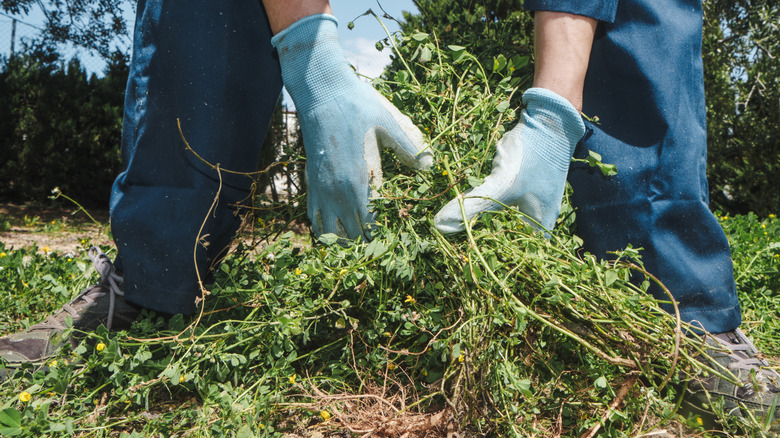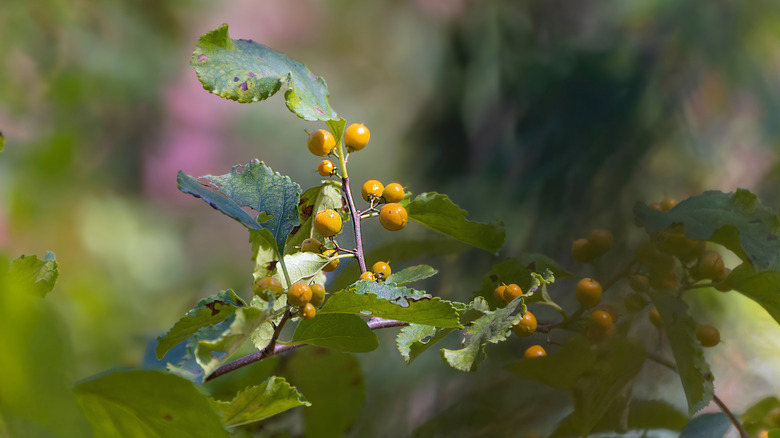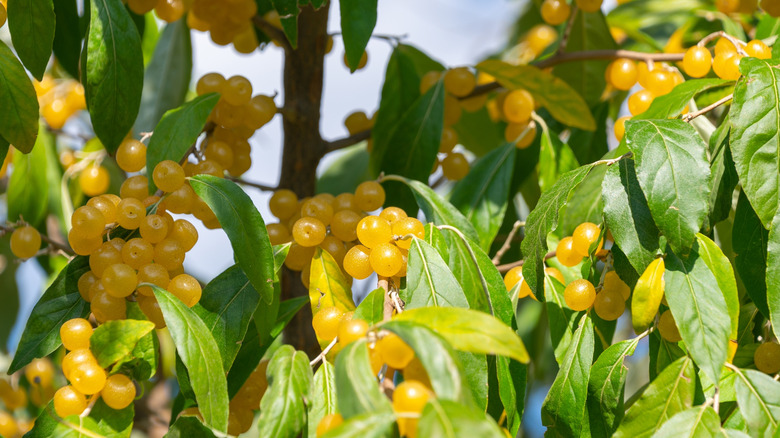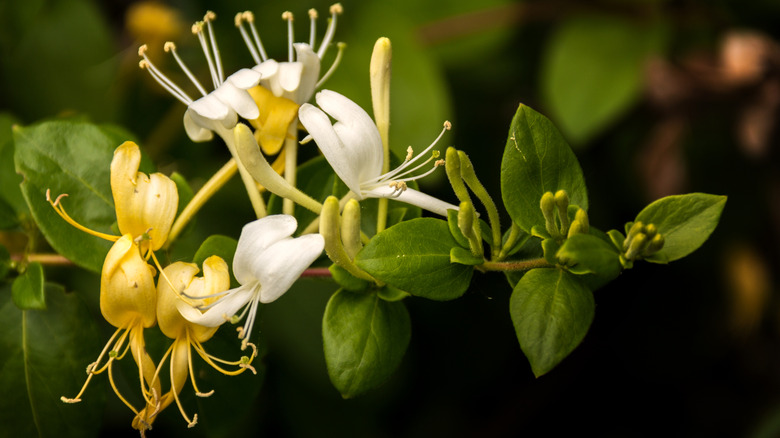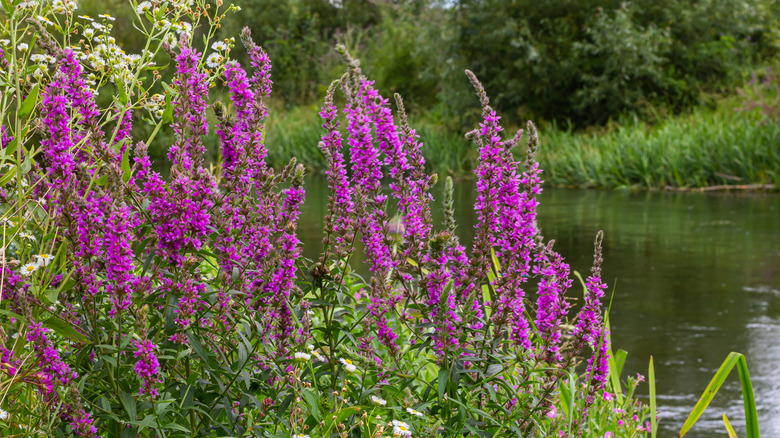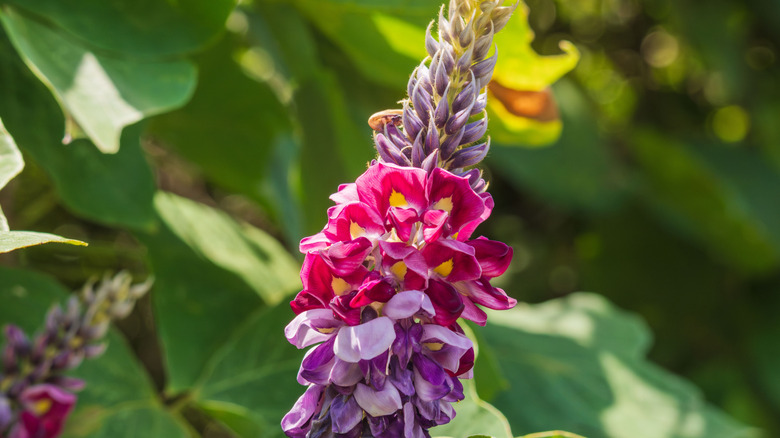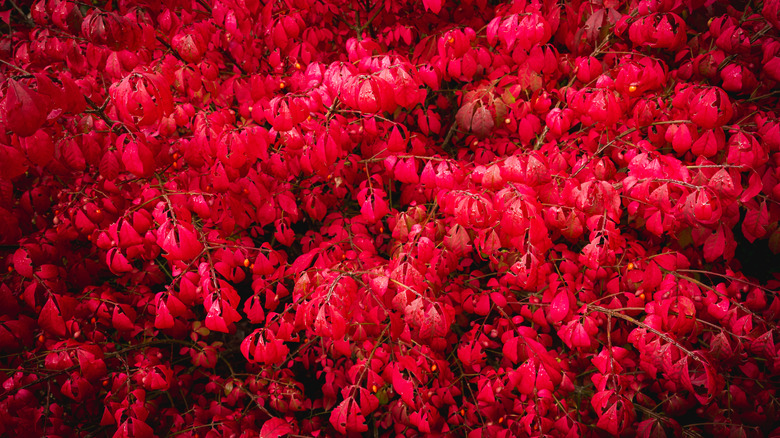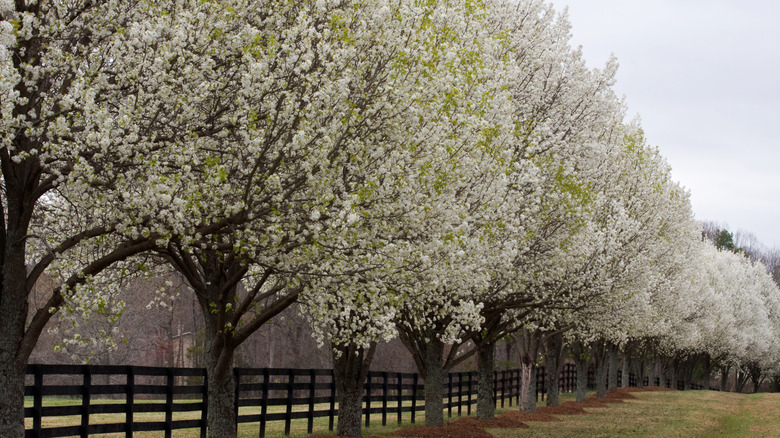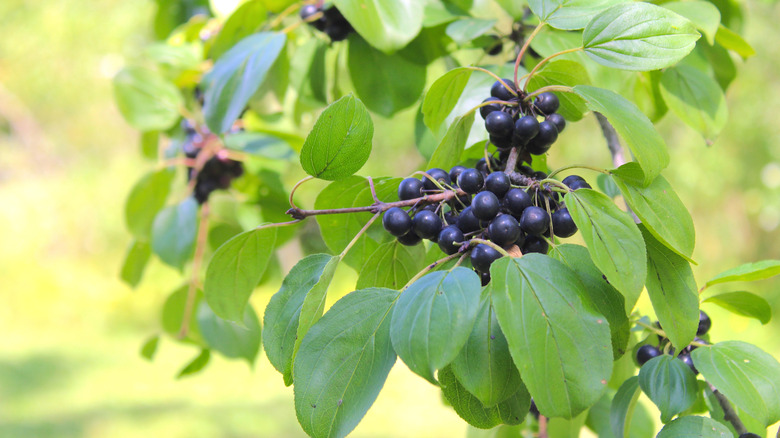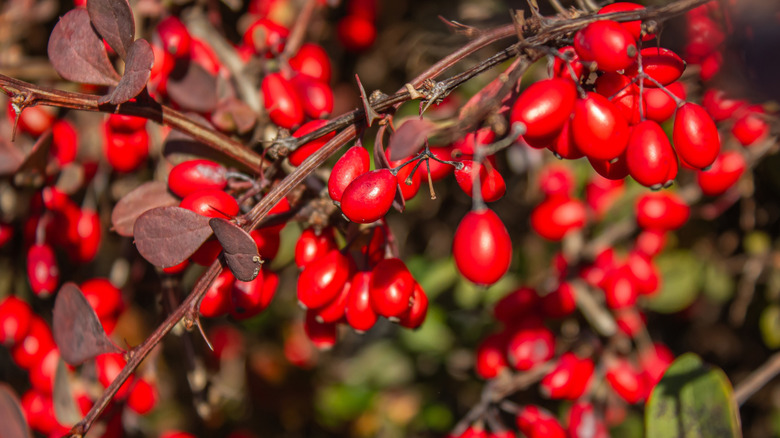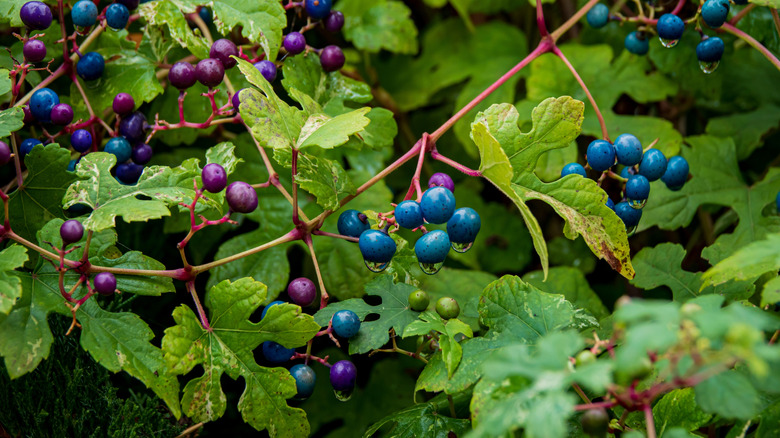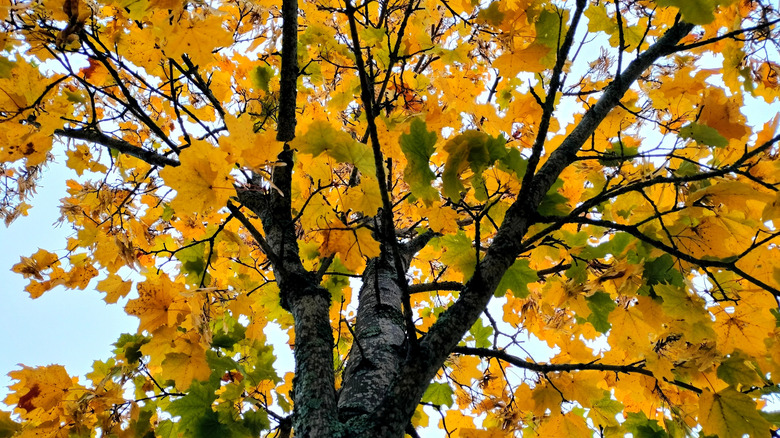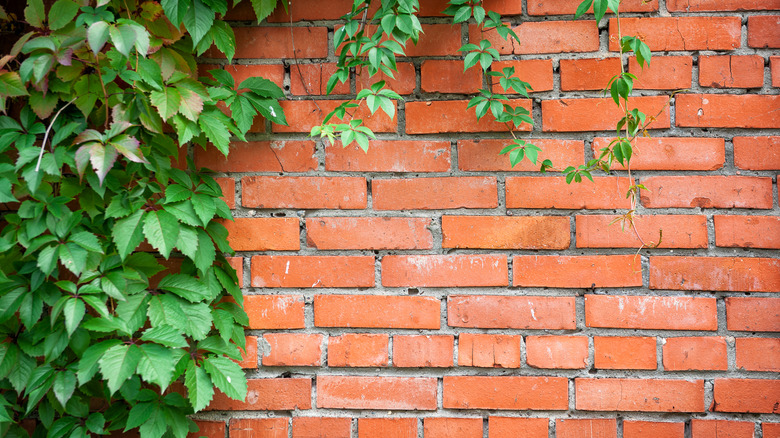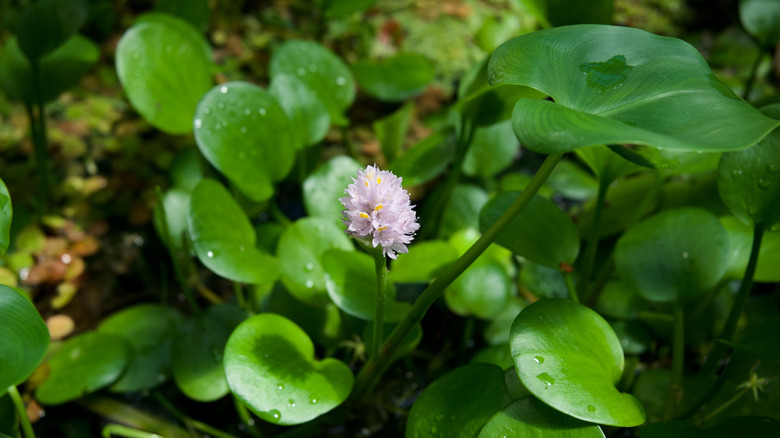13 Invasive Plants To Avoid In Your Fall Garden
Fall is the perfect time to clean out your garden and get rid of any invasive plants. Although some invasive plants have desirable traits, they tend to crowd out native species and can take over the local ecosystem. Many insects and animals that the ecosystem depends on need native plants to thrive. Some plants are so invasive that they significantly eliminate much of the local biodiversity. To see this in action, all you have to do is look at the way kudzu has taken over many areas of the southern United States. This task is ever more complicated because you may not realize that some plants are invasive. While some states have outlawed the sale of some particularly invasive plants, others have very little regulation. Because of this, you can still buy many invasive plants in nurseries or big box home stores.
It can be heartbreaking to deliberately pull out a thriving plant that you love once you find out it's invasive. To help avoid that, we've put together the following list of the worst invasive species to avoid at all costs. If you never plant them, you'll never have to pull them out. This can save you a lot of trouble down the line. Many homeowners have planted a pretty vine like Asiatic bittersweet, Japanese honeysuckle, or English ivy to fill a shady part of their yard only to spend the next decade fighting to eliminate it. Once an invasive species has taken hold, it can be almost impossible to get rid of.
Asiatic bittersweet
Asiatic bittersweet (Celastrus orbiculatus) is an invasive vine that has pretty red berries from fall through winter. If you're making a homemade wreath from foraged decorations, you may be tempted to use the berries for decorations. Birds and other animals eat these berries and scatter the seeds in their scat. The vines can grow up to 60 feet in length, making for an impressive show. However, if you plant it, it will soon take over your yard and spread to other nearby areas.
Autumn olive
Autumn olive, a beautiful but invasive fruit-bearing tree, has small white flowers in the spring and summer that turn into bright red berries in the fall and winter. The berries are edible for people, birds, and animals, which contributes to its rapid spread. Elaeagnus umbellata was originally imported for erosion control. Although it works well for that purpose, its invasive nature has turned it into a menace. Autumn olive has nitrogen fixing nodules in its roots, which allow it to thrive in environments that would kill other plants. Each plant can produce up to 2,000 seeds per year.
Japanese honeysuckle
In the spring when Japanese honeysuckle is in full bloom and filling the air with its heavenly fragrance, you could be forgiven for thinking it may not be a bad thing for it to take over the world. Unfortunately, Lonicera japonica will strangle nearby plants. It can reproduce by spreading seeds or by sending out runners that root at the node. It's easily recognizable by its yellow and white flowers. Birds aren't the only ones who enjoy the flowers' nectar — for centuries, children have been plucking the flowers and sucking out the sweet, honey-flavored liquid.
Purple loosestrife
Purple loosestrife (Lythrum salicaria) thrives in every U.S. state and across Canada. It tolerates the short growing season in cold climates, and in many areas, has become the dominant plant life in wetlands, a critical and often endangered ecosystem. It crowds out native plants that provide nesting sites for birds and other mammals. A single plant produces one to 15 stems and up to two million seeds.
Kudzu
Kudzu (Pueraria montana) could be the poster child for invasive species. This import from Japan resists all efforts to contain it. Because it's edible, one of its original uses was as a foraging plant in the southeastern United States. It was heavily planted for erosion control until the 1950s when people began to realize how invasive it is. It can grow up to 1 foot a day and 60 feet annually. As it grows over other plants, it kills by smothering them and blocking them from receiving necessary sunlight and oxygen.
Burning bush
This striking red shrub is still widely available at nurseries despite its invasive nature. Its dark green leaves turn bright red in the fall, giving the plant its distinctive look and name, burning bush. It produces prolific red berries that will germinate in both sun and shade. It adapts well to many environments, a trait that gives Euonymus alatus a dangerous advantage over some of its pickier native neighbors.
Bradford pear
This stinky tree you should avoid at all costs was originally thought to be sterile, a notion that seems laughable now. It is able to cross-pollinate with many other varieties of non-sterile Callery pears. It's an attractive landscaping tree that produces small white flowers in the spring. The foul-smelling flowers are one of its distinctive characteristics. Any homeowner who has cut down a Pyrus calleryana 'Bradford' only to have the stump re-sprout can attest to its persistent nature. Its sprouts have thick dense thorns that prevent animals from interfering with its growth and allow it to outcompete native species.
Common buckthorn
Common buckthorn (Rhamnus cathartica) is native to Europe. It's both shade and drought-tolerant and can reach heights up to 22 feet. You can easily identify it because it's usually the first shrub to leaf out in the spring and it keeps its leaves well into the fall. Greenish-yellow flowers first appear in June and transition to berries that start out green before maturing to black.
Japanese barberry
Japanese barberry (Berberis thunbergii) has been used in landscaping since 1875. However, it's now considered a noxious weed and is illegal to sell in some states, such as Pennsylvania. The shrub grows up to 4 feet in height and has spiky thorns that deter deer and other animals from munching on it. Its yellow flowers appear in the spring, followed by bright red berries that last throughout the winter. These striking berries are one reason it's been so prized as a landscaping plant, but its aggressive growth habit quickly outweighs any benefits.
Porcelain berry
Porcelain berry (Ampelopsis brevipedunculata) is a climbing, woody vine that can grow up to 20 feet in height. As it grows, it forms a dense network of vines that crowds out other plants. It's only recently been recognized as an invasive species. It's found primarily in damp, shady areas such as around river banks, edges of ponds, and dense forests. It resembles native grapes, which can make it hard to identify. You can differentiate it from native grapes by its small white flowers and fruit that begins white and then turns yellow, green, or turquoise.
Norway maple
The Norway maple was introduced to the U.S. as a landscaping tree, and, as such, was planted in many suburban and urban areas. It spreads through seed and is widely found throughout the eastern and western United States. Acer platanoides elbows out native species such as sugar maple and provides so much shade that native wildflowers don't have enough sun to grow, making it doubly destructive.
English ivy
Seeing a brick building with ivy growing up the sides brings to mind idyllic country estates. However, english ivy is one of the most invasive plants in the U.S. It's almost impossible to eradicate after it takes hold. It spreads to native forests, where is smothers trees and takes over the forest floor. Hedera helix grows quickly from cuttings or nodes, and it has the potential to reach an impressive 80 feet in height.
Water hyacinth
Water hyacinth is a tightly regulated invasive species. It's not as big of a problem as many other species on this list, but in the wild, it can prevent the growth of healthy aquatic plants that can clean water. It's legal buy it to plant in your own pond, but it can't be released into wild waters. Even so, it might be better to avoid altogether. Once it starts growing, Eichornia crassipes reduces the available sunlight for other plants and animals in the water and can create an ideal breeding habitat for mosquitos.
